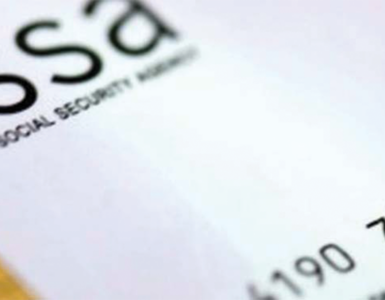EMERGENCY: Policy helps remove the possibility of unexpected expenses including lost or damaged luggage
By Isaac Moledi
It is that time of the year when those who can afford it, pack their bags and head off on that long-awaited December holiday. That festive feeling is in the air and there is no doubt because you can almost smell it. But skimping on insurance could leave your dream holiday in tatters.
The last thing you want to think about is what would happen if anything goes wrong. However, ignoring the risky aspects of travel and not planning accordingly – not taking out travel insurance or relying on credit card insurance only – is one of the biggest travel errors millions of South African holidaymakers make.
Travel insurance is therefore essential because it is designed to protect travellers from unforeseen changes leading up to your departure and throughout your holiday. It protects the cost of your trip if you have a travel delay or are forced to forego your flight.
It removes the possibility of unexpected expenses related to delays or lost and damaged luggage and it ensures that your health and wellbeing is looked after when you need medical attention during your holiday.
One key travel item that South Africans Should not forget as they get ready for their yearend international adventures, according to Santam’s travel insurance division, is travel insurance – something to safeguard you against potential inconveniences such as trip cancellations, interruptions, baggage losses or emergency medical coverage and evacuations, among others.
Although outbound (and inbound) travel is only expected to reach pre-pandemic levels by around 2027, the 2022 -2023 Santam Insurance Barometer report shows that there has been a considerable uptick in travel insurance policy sales since international travel reopened late in 2021 and throughout 2022.
Santam’s travel insurance division, Travel Insurance Consultants (TIC) – a wholly owned Santam specialist business and South Africa’s largest travel insurance company, also noticed a greater percentage of travellers purchasing more comprehensive cover when travelling internationally.
While the increase in travellers taking risk management steps is encouraging, Jason Veitch, Head of TIC, notes that there has been a notable jump in travel insurance claim incidences, mostly for accident and injury-related medical expenses, with the average cost of medical claims up two-fold in 2022 compared to the preceding 12 months.
The TIC has also noticed that the cost of medical claims in 2023 has increased well above normal inflationary amounts, making travel insurance even more important.
A comprehensive travel insurance policy provides cover against multiple travel risks, though some features may differ depending on the insurer. These include:
- Emergency medical and related expenses
- Hospitalisation cover for pre-existing illnesses
- Cancellation and curtailment: to recover costs should you need to cancel or cut your trip short due to illness or injury
- Accidental death and disablement or permanent disability
- Travel delays
- Missed connections
- Lost or damaged luggage
Veitch highlights some additional considerations when purchasing a travel insurance policy for your year-end break. “It is important to take note of exclusions such as cover for pre-existing conditions, as well as various cover and age limits. Also, make sure you are covered against potential injuries arising from any high-risk activities you may have planned during your holiday such as paragliding, hiking, or bungee jumping, among others.’’
Veitch says the most important benefit of a travel insurance policy is to have access to emergency medical cover and related expenses. More than half of TIC’s medical claims are accident and injury- related. The policy’s premium is paid in Rands but the cover for medical expenses, which can quickly escalate into millions, is settled in foreign currencies. “With the current depreciating value of the Rand, this benefit is more important than ever.”
Veitch adds that including insurance in your vacation budgeting is one of the most important parts of planning a holiday. “As part of this process, it is important to ensure you do thorough research and put aside adequate funds for a travel insurance policy that suits your needs.”
As to when the best time to purchase a travel insurance package is, Veitch says it is best to buy cover as soon as possible once flights have been booked and you have committed to your travel plans.
“A travel insurer is best placed to offer advice on your travel insurance needs and a policy can be obtained directly through your insurer, your broker or through your local travel agent.
The earlier you purchase your policy, the sooner you can obtain the widest possible cover available.”
VARIOUS OPTIONS TO HELP CONSUMERS KEEP LIGHTS ON DURING LOADSHEDDING
WORKMANSHIP: Be wary of dodgy installers who offer no warranties and back-up parts on their products
By Isaac Moledi
The continuing deteriorating situation at Eskom, with sudden increases in the levels of loadshedding taking place without much notice has become extremely disturbing and stressful for many South Africans.
At the time when the majority of South Africans thought the situation of sporadic power cuts was stabilizing, especially at the height of the Rugby World Cup competition some weeks ago, the ailing power utility escalated load shedding to Stage 2 in the past Tuesday morning, continuing until the afternoon, before implementing Stage 3 power cuts at 4 pm.
The constant loadshedding has become a familiar reality for the majority of South Africans as the country is now fluctuating between Stage 3 and 6 . This has led to dire consequences with increased expenses on food and other household needs and long hours of sitting in darkness with rotten foodstuffs in refrigerators becoming a norm.
The Minister of Electricity, Kgosientsho Ramokgopa, admitted that the past weeks have been extremely challenging for Eskom as several units had to be taken offline for repairs. The situation of power disruptions is expected to continue in 2024 and beyond. But as sporadic power cuts continue to be an everyday menace for the majority of South Africans, so is the confusion around what solution Eskom has to offer.
Dylan Schnetler, Commercial Head for Synapse Ultra at Rubicon, cautions that before anyone can dive headfirst into purchasing a backup power solution, they should approach the decision with careful consideration and a long-term perspective, as it is not yet clear when or even if South Africa’s energy problems will ever be solved.
According to him, any money spent on an unsuitable backup solution today will only detract from your ultimate aim of energy independence.
“Be wary of all the cheap ‘plug and play’ solutions flooding the market. Drop-and-go shippers and dodgy installers often offer no local support, backup parts or warranties on their products.”
Schnetler offers some of the options to keep the lights on:
Option 1: An uninterruptible power supply (UPS)
If you are looking for a quick and affordable solution to keep your smaller electronic devices like TV, Wi-Fi router, DStv and a few lights running during loadshedding, a UPS could be your best bet. This gadget has rechargeable batteries that store electricity, providing you with a steady source of power when Eskom flips the off switch. You can have an electrician directly link the UPS to your main power board. This way, it will immediately kick in during loadshedding. Alternatively, you can simply plug your desired device directly into the UPS. Just remember not to overload it, as that might cause it to trip or potentially get damaged. If you purchase a UPS for around R1,000, do not expect it to handle powerhungry appliances like kettles, airfryers or hairdryers.
A UPS is affordable and easy to set up (unless you want it connected to your mainboard). However, it comes with limitations because It can only power small appliances and it may not be feasible to increase the storage capacity to provide a longer backup runtime or enhance the power output for larger devices. The backup runtime depends on factors like the UPS capacity, connected load and battery capacity.
Option 2: A portable power station.
Portable power stations have gained popularity as a versatile choice for many households. Originally intended for camping and outdoor adventures, these devices come equipped with built-in batteries that can provide anywhere from 100 watts to over 1,000 watts of power. They are commonly fitted with 220V South African plug points and USB ports, which means they can power a range of devices. What sets portable power stations apart is their ability to provide extended power supply for hours and provide more electricity than a UPS.
Unlike a UPS, which is primarily designed for backup power during outages, a portable power station can be used in various situations, including outdoors. You can also often recharge it using solar panels or conventional power from the grid. As choosing the right size for a portable power station can be challenging, the costlier the power station, the greater its battery capacity for storing electricity.
Option 3: A complete backup power system.
If you are exhausted from enduring countless nights without power and desire a reliable solution that allows multiple appliances to operate during loadshedding, a complete backup power system is the answer. Broadly speaking, there are two options available: a system that includes only an inverter and batteries or a more comprehensive system that combines an inverter, batteries and solar panels to generate electricity.































